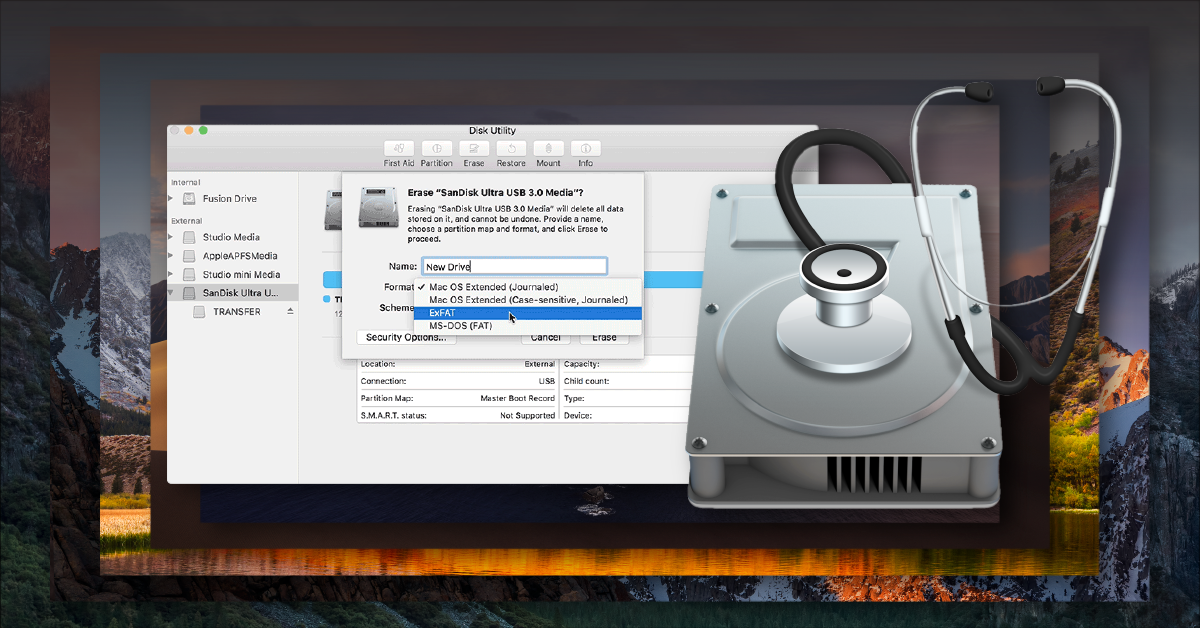

- Format ssd for mac and install os mac os#
- Format ssd for mac and install os driver#
- Format ssd for mac and install os windows 10#
Format ssd for mac and install os mac os#
Refer to the following message from Ubuntu's mailing list if you want to learn more. The size of the Windows operating system that comes with your device and the amount of free storage space needed to download and install Windows updates are. Install Mac OS here, it only gives me a choice to Reinstall macOS and goes.
Format ssd for mac and install os driver#
Warning: The driver descriptor says the physical block size is 2048 bytes, but Linux says it is 512 bytes.Īll these warnings are safe to ignore, and your drive should be able to boot without any problems. setup does not find the laptops SSD onto which to install the OS.

Format ssd for mac and install os windows 10#
Try making a fresh table, and using Parted's rescue feature to recover partitions. Re-installing Windows 10 will completely erase your hard drive, so back up all those. Is this a GPT partition table? Both the primary and backup GPT tables are corrupt. If you don't see this button, click Erase instead. Or perhaps you deleted the GPT table, and are now using an msdos partition table. Format: APFS or Mac OS Extended (Journaled), as recommended by Disk Utility Click Erase Volume Group. Perhaps it was corrupted - possibly by a program that doesn't understand GPT partition tables. However, it does not have a valid fake msdos partition table, as it should. Follow on-screen prompts to choose Mac OS Extended (Journaled) file system and allow the disk to format. Find the name of the drive in the left side of the Utilities window and select it. dev/xxx contains GPT signatures, indicating that it has a GPT table. Start the Disk Utility, located under Applications > Utilities. See Erase and reformat a storage device.įile system formats available in Disk Utility on MacUbuntu images (and potentially some other related GNU/Linux distributions) have a peculiar format that allows the image to boot without any further modification from both CDs and USB drives.Ī consequence of this enhancement is that some programs, like parted get confused about the drive's format and partition table, printing warnings such as: You can’t delete or erase your startup volume.

(Optional) Enter a new name for the volume.In the Disk Utility app on your Mac, select the APFS volume you want to erase in the sidebar.If you’re using an older Mac (from 2010 or. Your Mac will boot into the recovery partition. Shut down your Mac, turn it on while holding down Command+R. Your Mac’s Recovery Mode is a treasure trove of useful tools, and it’s the easiest way to wipe your computer and start from scratch. When you erase a volume, all the data on the volume is permanently erased, and the empty volume remains in the container. Step One: Boot From Recovery Mode, or an Installer. instead of standard erase for Mac SSD to format Mac disc. Click the Delete Volume button in the toolbar. Luckily, you can install the Mac OS from the Apple server or the recovery partition in your.In the Disk Utility app on your Mac, select the APFS volume you want to delete in the sidebar.HDD makes the overall experience slow as it takes a lot of time to fetch data, install software, and everything else. Even today there are many PCs, especially the OS installed on them.

When you delete a volume, all the data on the volume is permanently erased, and the volume is removed from the container. HDD or Hard Disk Drive is an old form of storage that is slower compared to the modern SSD or Solid-State Drive.


 0 kommentar(er)
0 kommentar(er)
